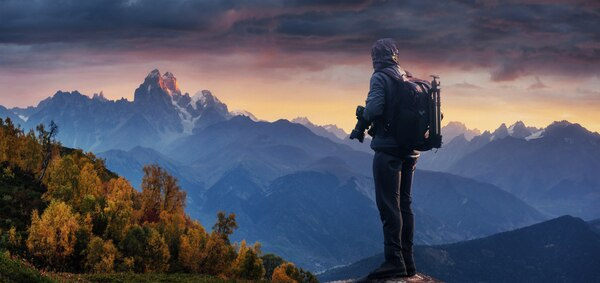Tips for Capturing Stunning Landscapes
Capturing stunning landscapes requires more than just a good camera; it demands an understanding of the scene, a creative eye, and the right techniques. Whether you're a beginner or a seasoned photographer, these tips will help elevate your landscape photography to the next level.

1. Plan Your Shoot
Before heading out, research your location. Check the weather conditions and consider the timing for the best light. Early mornings and late afternoons, often referred to as the "golden hours," provide softer lighting and more dramatic shadows. Additionally, knowing the terrain can help you anticipate the best vantage points.
2. Use a Tripod
Stability is crucial for landscape photography, especially when shooting with a slower shutter speed during low-light conditions. A sturdy tripod eliminates camera shake, allowing you to take crisp images and experiment with longer exposures to capture movement, like flowing water or moving clouds.
3. Master the Rule of Thirds
The rule of thirds is a fundamental composition technique. Imagine your image divided into nine equal sections by two horizontal and two vertical lines. Place key elements along these lines or their intersections to create a balanced and naturally appealing photo. This technique helps maintain viewer interest by aligning the horizon or focal points thoughtfully within the frame.
4. Incorporate Foreground Interest
Adding an element of interest in the foreground can significantly enhance your landscape compositions. Rocks, trees, flowers, and other natural features can draw the viewer’s eye into the scene and provide a sense of depth. Be mindful of how these elements interact with the midground and background.
5. Play with Depth of Field
A wide aperture (small f-number) might be popular for portrait photography, but for landscapes, a smaller aperture (large f-number) is typically best to keep the entire scene sharp. Experiment with different aperture settings to find the right balance between sharpness and desired depth of field.
6. Experiment with Filters
Utilizing filters can drastically improve the quality of your landscape photos. A polarizing filter reduces reflections and glare while enhancing colors, especially in skies and water. Neutral density (ND) filters allow for longer exposures even during bright daylight, giving you the capability to capture motion blur creatively.
7. Capture Movement
Incorporate movement into your landscapes for dynamic and engaging compositions. A long exposure technique can turn the ocean waves into a silky blur or make clouds sweep dramatically across the sky. This approach requires patience and a fair amount of practice, but the results can be breathtaking.
8. Wait for the Right Light
Light dramatically affects the mood and tone of your landscape photographs. Midday sun can be harsh and create undesirable shadows, whereas the soft, golden light at sunrise or sunset adds warmth and emotion. Cloudy or overcast days are excellent for shooting near waterfalls or in forests due to the diffused, even lighting.
9. Tell a Story Through Your Image
Every landscape has a story to tell. Consider what you want to convey to your audience—be it the grandeur of a mountain range or the tranquility of a secluded pond. Use different compositional elements, lighting, and perspective to communicate this narrative effectively through your image.
10. Practice Patience and Persistence
Landscape photography is as much about waiting as it is about shooting. Great shots often come to those who are patient and willing to wait for the perfect moment. Return to the same location at different times or seasons to capture its diverse beauty.
By combining these tips with your creativity and passion for the outdoors, you can enhance your ability to capture breathtaking landscapes. Remember, photography is an art as well as a science, so don't be afraid to break the rules occasionally and explore new perspectives.